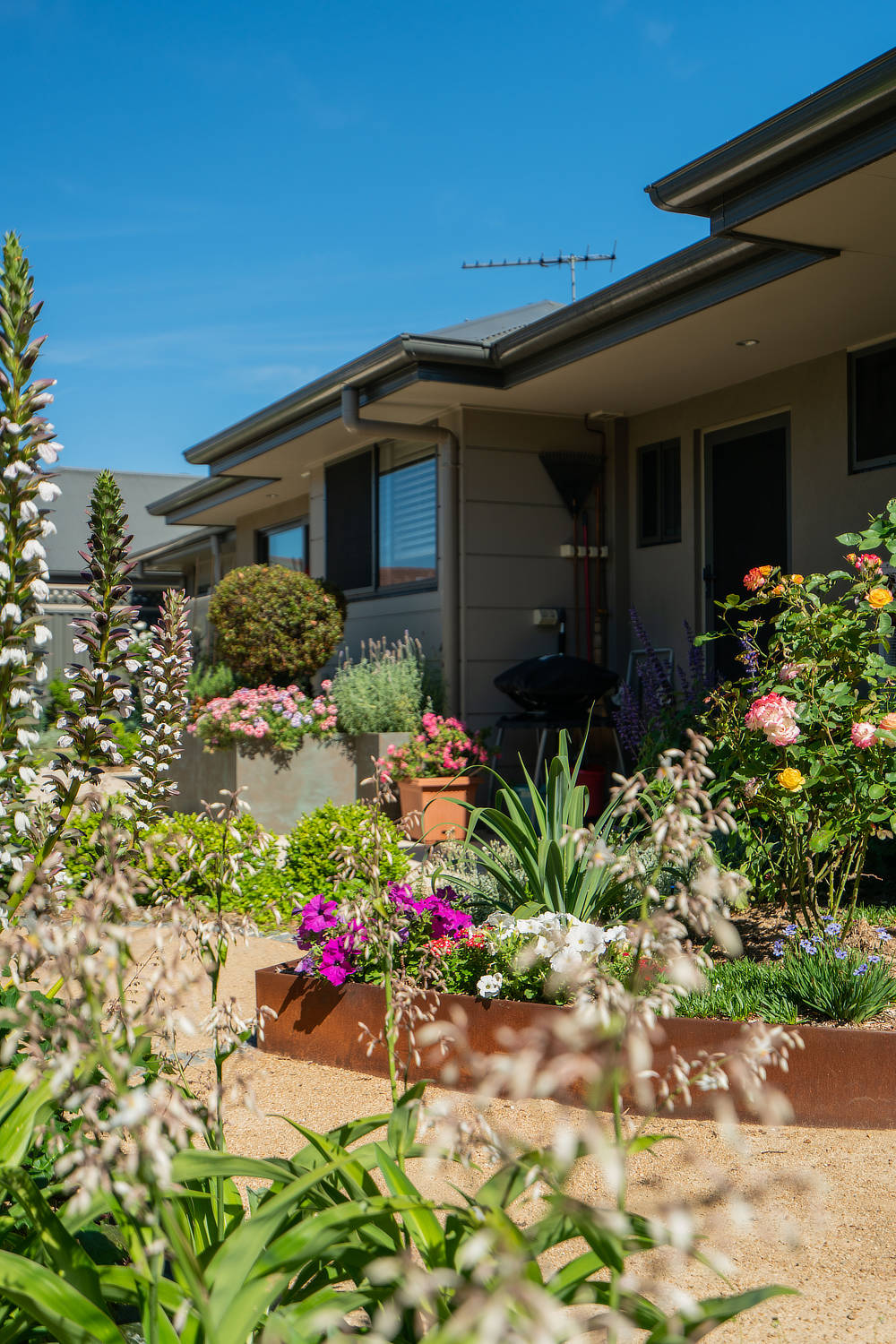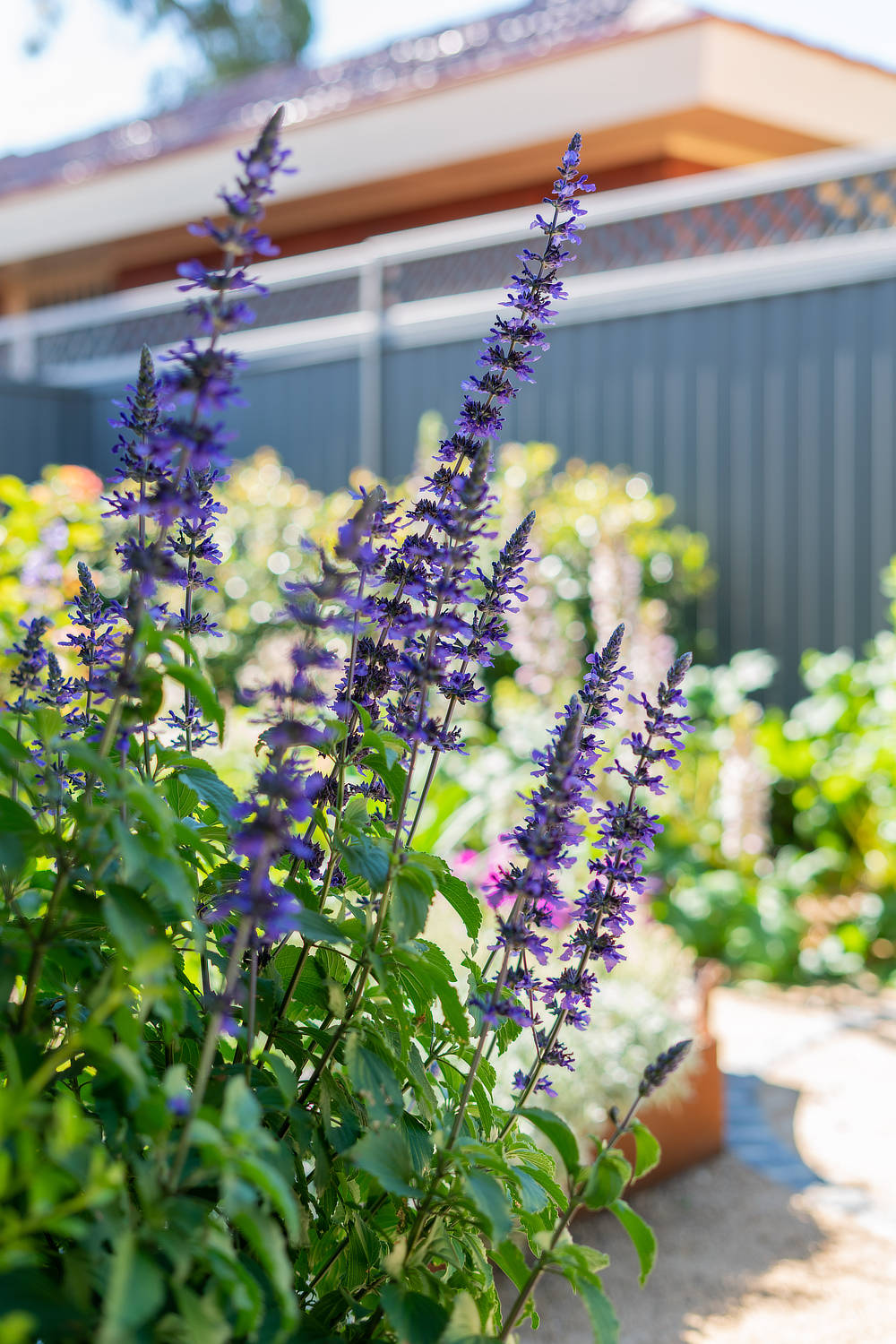The small garden is a thing of the future, as blocks get smaller and houses bigger sadly it’s the garden that suffers, so it’s imperative you get the space right and make it feel as larger as possible. Even if you have a large garden there will be a corner that you can apply small space gardening practices to, thus maximising your outdoor experience too.
The first thing I like to do in a small space is to blur the boundary edges of the garden. When the eye is drawn to a definite boundary such as the point where fences meet in corners and where they touch the ground the space immediately feels smaller. Blurring these points with plants is the easiest way to soften this and make the area feel larger.
If this point is a junction of hard surfaces such as a seat meeting in a corner, then try to break up the solid vertical and horizontal lines. Do this with soft furnishings like cushions or by adding a textural detail to the surface – something like wainscoting works well.
In a small space you need to maximise your back for buck and planting on the vertical surface is a great way to do this. Upright plantings such as capital pears, Panicum grass and Slimline camellias work well. If you can’t afford the real estate for these plants look for climbers that hold themselves against a wall and self-support such as creeping fig or Boston Ivy. If you don’t want to take up any footprint on the ground, you can look at a high impact feature like a greenwall otherwise known as a vertical garden however these are not for the budget conscious ranging from $1,200 to $2,500 a square meter! Although expensive these items will really give your small garden a huge lift and draw you out into the space.
Don’t be afraid of plants in a small space, they will make the whole thing feel much larger, I like to play a trick where I use oversized foliage for my main feature plants to trick the eye into thinking the space is bigger than it is. If you do the opposite and have everything small leaves the space feels too busy and crowded. It’s a fine line but you want a mixture of textures and sizes to fill up the space yet allow comfortable movement around the garden.
If you don’t have garden to plant in; pots will be your best friend, make sure you go for slimline planters so you don’t take up too much space and select plants that can cope with your aspect and a limited root run. If you want to save a few dollars you could try grow bags, these are simply bags designed to be planted directly into and can hold a range of short-lived plants like annuals, biennials, herbs and vegetables. I actually use a Richgro grow bag to bring on my vegetable seedlings before planting out into the veggie patch, maximising my yield.
When it comes to dressing your small space with furniture you need to be realistic about what you can use the space for. If you don’t have the room for a large 12-person dining table and an outdoor sofa to relax on then you simply cannot have both. When selecting furniture, you need to be able to comfortably move around it, and when it comes to tables imagine the space your guests will be taking up. Extension tables work wonders to transform a space from everyday use to a gathering of friends.
Built in furniture, such as seating, bars and tables is also a must have for the small space as it removes the area people can move around the furniture and frees that space up for other features.


